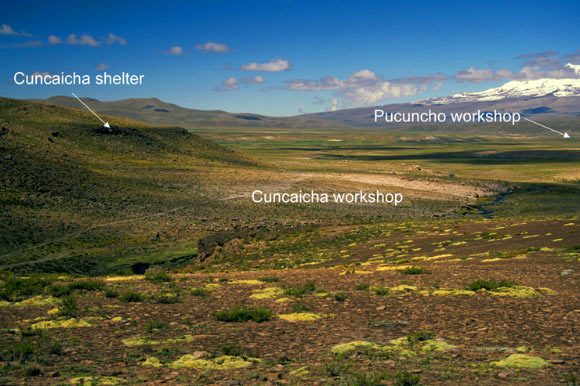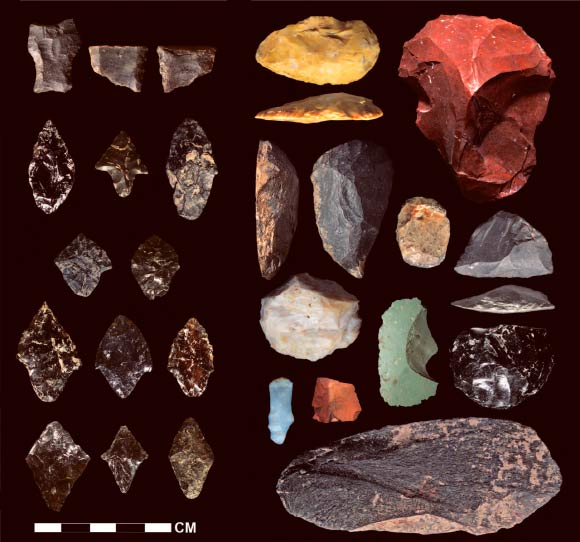It looks like you're using an Ad Blocker.
Please white-list or disable AboveTopSecret.com in your ad-blocking tool.
Thank you.
Some features of ATS will be disabled while you continue to use an ad-blocker.
14
share:
Living at 4.5 km above sea level!


source
Edit: There is another ATS thread on this subject Here

The first site Dr Zarrillo and her colleagues discovered, Cuncaicha, is a rock shelter at 4.5 km above sea level, with a stone-tool workshop below it. According to the archaeologists, it was occupied about 12,400-11,500 years ago. The second site, Pucuncho, is an ancient workshop where stone tools were made at 4.4 km above sea level. It dates to around 12,800-11,500 years ago. “We don’t know if people were living there year round, but we strongly suspect they were not just going there to hunt for a few days, then leaving. There were possibly even families living at these sites, because we’ve found evidence of a whole range of activities,” Dr Zarrillo said.

The Pucuncho site yielded 260 stone tools, such as projectile points, bifaces and unifacial scrapers. The Cuncaicha rock shelter contains a “robust, well-preserved and well-dated occupation sequence.” “Most of the stone tools at Cuncaicha were made from locally available obsidian, andesite and jasper, and are indicative of hunting and butchering consistent with limited subsistence options on the plateau. In addition to plant remains, bones at the site indicate hunting of vicuña and guanaco camelids and the taruca deer,” the scientists said.
source
Edit: There is another ATS thread on this subject Here
edit on 28-10-2014 by AlaskanDad because: (no reason given)
a reply to: AlaskanDad
I posted about this a few days ago and if you're interested, there are some additional links:
World's Oldest High-Altitude Settlement Discovered, Dates Back to 10,000 BC
I posted about this a few days ago and if you're interested, there are some additional links:
World's Oldest High-Altitude Settlement Discovered, Dates Back to 10,000 BC
edit on 2014-10-28 by theantediluvian because: (no reason given)
a reply to: theantediluvian
Thanks for your link!
I added it to the OP
Thanks for your link!
I added it to the OP
edit on 28-10-2014 by AlaskanDad because: (no reason given)
Wow, that's an incredible find. Were these the cast-offs that weren't used for hunting or were they lost? Maybe a craftpersons showroom, toolbox or
a lost utility bag?
a reply to: AlaskanDad
No problem. I've got to start pulling from Sci-News, they've got an interesting selection of news items!
No problem. I've got to start pulling from Sci-News, they've got an interesting selection of news items!
new topics
-
This should be plastered all over the airwaves
Mainstream News: 3 hours ago -
Oh, Good Gosh. “Kremlin Warns Stay Away from Greenland.”
World War Three: 5 hours ago -
Archbisop Vigano Warns of Deep State and Deep Church
New World Order: 5 hours ago -
A Flash of Beauty: Bigfoot Revealed ( documentary )
Cryptozoology: 11 hours ago
top topics
-
This should be plastered all over the airwaves
Mainstream News: 3 hours ago, 12 flags -
Fire insurance in LA withdrawn months ago
General Conspiracies: 13 hours ago, 9 flags -
Oh, Good Gosh. “Kremlin Warns Stay Away from Greenland.”
World War Three: 5 hours ago, 9 flags -
A Flash of Beauty: Bigfoot Revealed ( documentary )
Cryptozoology: 11 hours ago, 7 flags -
Archbisop Vigano Warns of Deep State and Deep Church
New World Order: 5 hours ago, 7 flags
14
